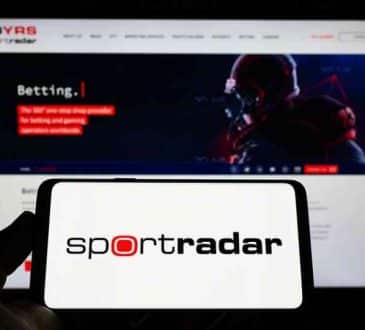A Workplace to Envy: 6 Questions to Ensure Your Culture Is Values-Driven

You want your working culture to say something about your organization. But what is it saying right now?
Companies with a thriving and supportive workplace boast better performance. In 2022, almost half of the more culture-forward organizations experienced a significant increase in revenue, much higher than the 9% of their more conventional peers. What’s more, these organizations have a more positive outlook on the future of their business, and the outside world can often see the evidence of this culture without even stepping foot in a building or attending a digital meeting.
So how do you get there? How does a successful leader create a worthwhile working culture that is both rooted in the organization’s values and accommodating to its widely diverse team members? These are six questions I get every executive to ask themselves to ensure their culture is enviable and values-driven.
- Are your values clearly defined?
By the 1740s, London was an epicenter of global trade and large-scale manufacturing. Literacy rates were on the rise, and printing houses for newspapers and periodicals were popping up left and right. However, despite all that rapid progress, the English language still had no modern dictionary. In fact, the need eventually became so pressing that a group of booksellers and printing houses made an agreement with Samuel Johnson in 1746 to produce an established lexicon. And so, A Dictionary of the English Language was born.If you want to build an enviable working culture, you have to start by defining what that means — by defining the values of both you and your organization. Unfortunately, these definitions often get neglected during the process or forgotten entirely — much like the English language when social progress went into overdrive. Not surprisingly, as much as 95% of employees say they don’t even understand their company’s overall strategy, and this level of confusion can be very counterproductive.
That said, starting the process with a well-defined and values-driven perspective means everyone begins their journey with confidence and clarity. How are you spending your time? How are you allocating your resources? These indicators provide us with useful insights into what matters most to our organizations, as well as how we prioritize each of them as a leader.
- Is your culture fully aligned?
Have you ever watched a traditional orchestra performance and thought, “What does the conductor actually do?” There isn’t really one answer to that question, but the conductor is the only person in possession of the score, which is a collection of every instrument’s part in the performance. From there, it is their job to iron out the timing and expression of the collective symphony or concerto as the musicians bring their different sounds together.Any team that is aligned in its objectives and unified in its efforts can be a powerful force. If the members of your organization are committed to the same values, it will not only allow for greater productivity, but also make it easier for employees to find satisfaction and strike a sustainable work-life balance. This type of working culture is only possible when the values of your organization and its team members are fully aligned. This means taking a closer look at all the perspectives involved and puzzling out how they might work together.
- Are you modeling your values?
Observing behavior is one of the most fundamental ways humans learn. Role models can have a profound impact on children, and recent studies show that observing the right behavior can improve self-control among adults and inspire corrective action. Why? Because this educational framework goes back as far as our infancy, mimicking the behaviors of those around us to take the next step.You come face to face with your organization’s values almost everyday. How you handle those confrontations is a direct representation of your priorities, and it sends a clear signal about what matters. This observable behavior can influence your workplace standards, day-to-day routines, and overall company vision.
For example, if your executives are not willing to live up to a certain standard themselves, then they should never expect it from their employees. On the contrary, when you model and embody the values that you demand from others, you are much more likely to receive support and inspire in-house ambassadors of your own.
- Are your values widespread?
Have you heard of the chasm that exists between early adoption and mainstream technology use? The stages of technology adoption are divided into two basic groups: early market and mainstream market. Many new technologies fail to bridge the group between the two and thus never achieve mainstream success. The reasons for this failure vary, but the tipping point at which they stall out or continue to grow remains mostly the same. Whatever happens, the idea just stops spreading.Even if your working culture is clearly defined and fully aligned with your team members, the values behind it can’t have a lasting impact on your organization without widespread adoption. No matter the industry, your organization is an interdependent system of professionals — a team working together. Each person and department has its own sphere of influence, meaning you need buy-in at every level before any set of values will begin synonymous with the system.
- Does your culture attract top talent?
Whenever you drop an ice cream cone on the ground, you’ll notice a group of ants marching toward the accident just a few minutes later. But how did they know that two giant scoops of sugar just hit the pavement? Like many insects, ants have a highly developed chemosensory system, which basically means it’s really easy for them to find their way to things they can eat. If something delicious is nearby, an ant knows it. If there is no food in the house, they know that too.The top talent in your industry is just as adept at sniffing out a supportive working culture. If your organization’s values are defined, aligned, and attractive, then the most sought-after talent will want to work with you. If your culture isn’t a priority, high-value professionals will avoid your company like a sugar-free sidewalk. If you can attract the very best of these, they will not only become an invaluable member of your team, but worthwhile brand ambassadors as well. After all, your values and your brand should be seen as parts of the same whole.
- Are you rewarding the right people?
The idea of a “carrot and stick” policy dates back to an illustration from the mid 1800s. The narrative in question involves a two-person donkey race in which the loser is seen continuously beating his donkey with a stick, while the winner sits back in a relaxed position with a carrot dangling from a pole. Winston Churchill would call on the metaphor just prior to World War II and American newspapers would print different versions of the tale during the 40s and 50s. It is an iconic representation of reward versus reprimand.
A values-driven organization must take this concept a step further. For a thriving working culture, it is not enough to employ both rewards and reprimands — carrots and sticks. Instead, the more critical part of the equation is ensuring the right reinforcements are going to the right person in a way that is both consistent and equitable. After all, your organization’s values are what is guiding your rewards system from behind the scenes. So what does that say about your culture, and what are you going to do about it?
Written by Dr. Sam Adeyemi.
Have you read?
The World’s Largest Companies by Market Cap, 2024.
The World’s Richest Female Billionaires, 2024.
Revealed: Countries in the world with the most female billionaires, 2024.
Poorest Countries in the World, 2024.
Ranked: Discover the Most Popular Sports in the United States, 2024.








